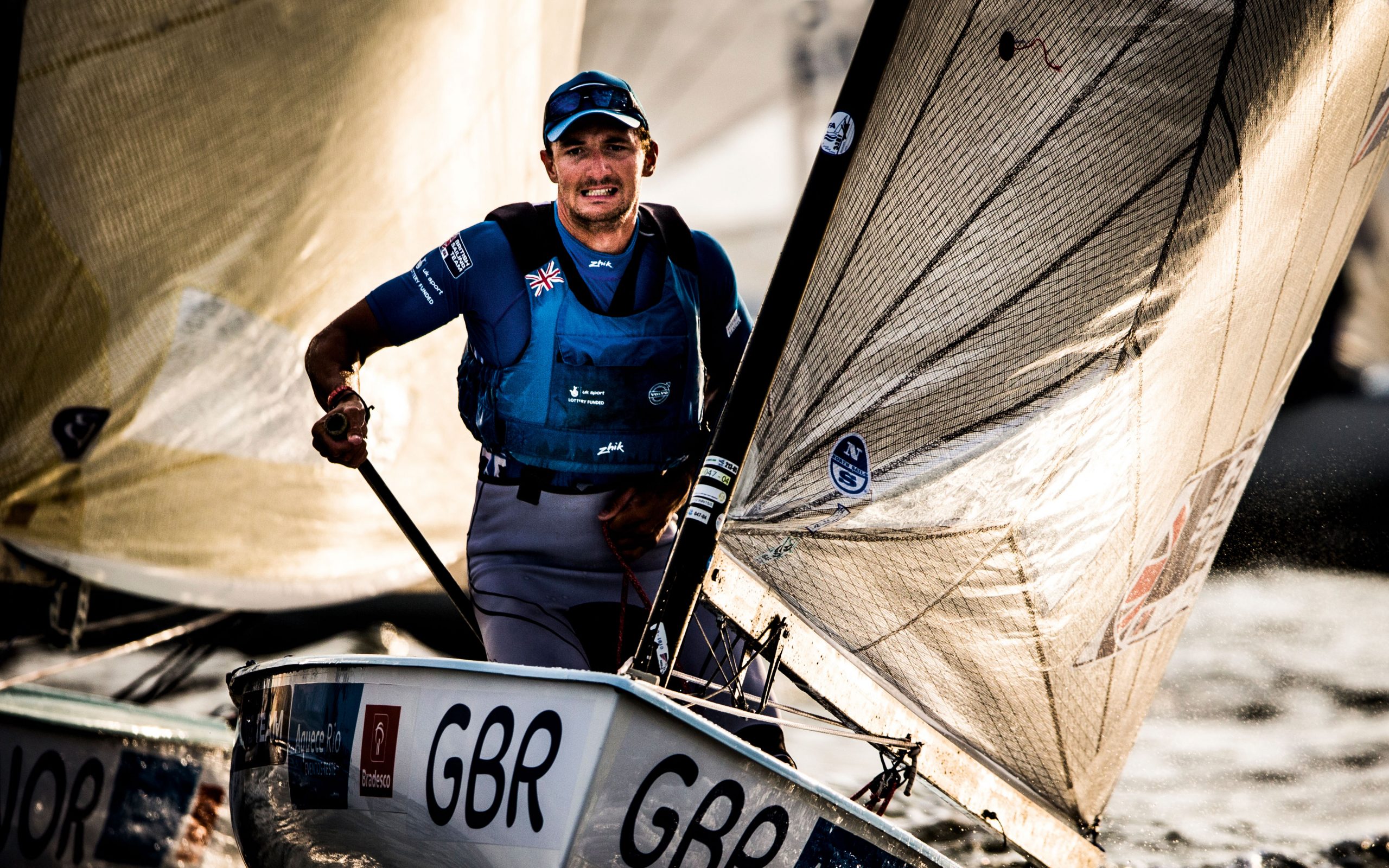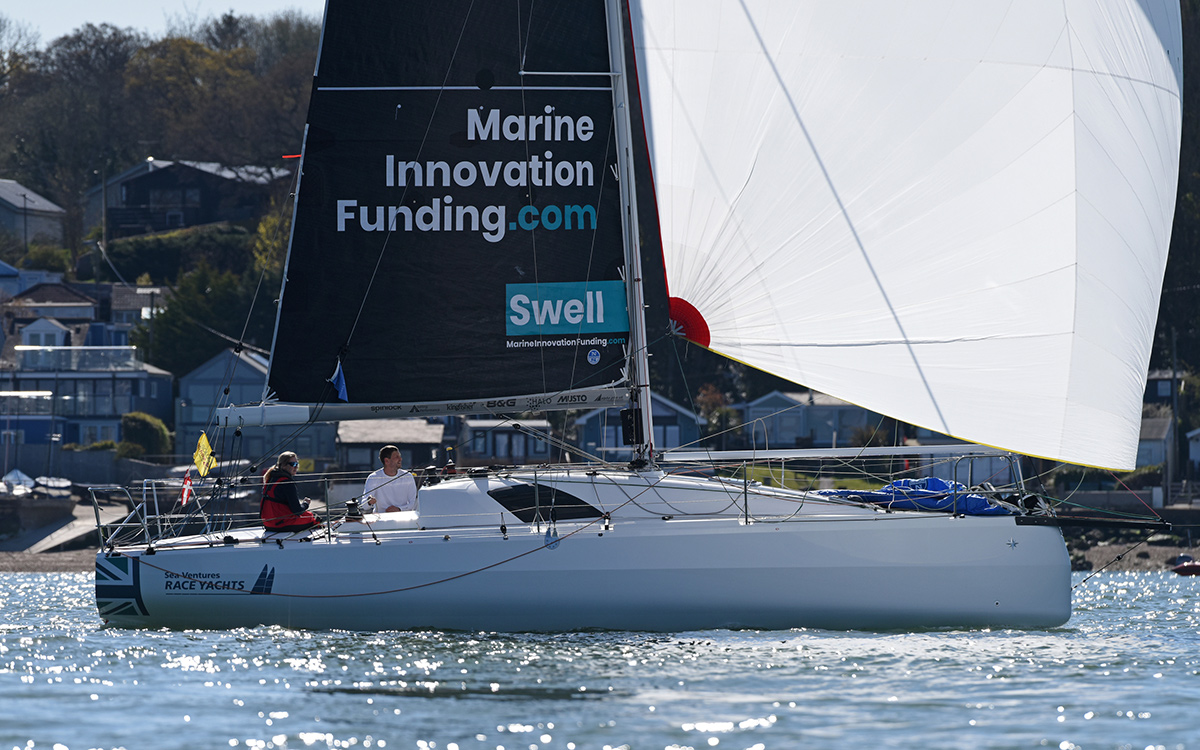It has been a part of sailing in the Olympics since 1952, but this summer, when the Finn dinghy fleet takes to the waters of Enoshima it will be its final Olympic outing
This summer will be last time we see the Finn dinghy at the Olympic Games. In order to meet the directive from the International Olympic Committee for equal participation and events for men and women at the Paris 2024 Games, World Sailing made the decision to drop the Finn class from the Olympic roster, in favour of a mixed double-handed offshore event (along with a mixed kiteboarding relay race, while the mixed offshore event was itself recently ditched for separate Men’s and Women’s kitesurfing medals).
After the departure of the Star ahead of the 2016 Olympic Games, the Finn took up the mantle as longest serving Olympic class – a baton, which will now be passed to the 470 class.
The Finn dinghy is synonymous with greatness. It debuted as an Olympic class in Helskini in 1952, where gold was won by Danish legend Paul Elvstrøm, defending the heavyweight dinghy title he had won at London in the Firefly class.
Elvstrøm went on to win three consecutive Finn golds, setting the bar for a class that has been a rite of passage for many of the greatest sailors of all time. Jochen Schümann, Russell Coutts, Iain Percy and, of course, four-times Gold medallist Ben Ainslie fill the roll of honour.
With a 69-year Olympic history, the Finn is the longest standing item of Olympic sailing equipment, having been designed in 1949 by Swedish canoe designer, Rickard Sarby. The 1952 Games was also the first time the Soviet Union and People’s Republic of China took part, women track athletes ran no further than 200 metres, and the Fosbury flop hadn’t been invented, so seismic have the changes been to the modern Olympics since its introduction.

Finn dinghy class secretary, and author of several books on its history, Robert Deaves explains: “For many sailors, back then and today, the Finn became a lifestyle choice as much as an Olympic sport. Sailors would immerse themselves in a training routine, devoted to living and breathing the boat. The boat came to exemplify the Olympic motto of ‘Citius, Altius, Fortius’, as the sailors challenged themselves to become faster, better and stronger.
Article continues below…
Giles Scott: Can the Brit secure a second gold in Tokyo?
Giles Scott is waiting. Like all of this year’s Olympic cohort, he is in a strange pre-Games limbo. Normally at…
Shirley Robertson on why offshore racing should be in the Paris Olympics
With just three years until the 2024 Olympics take place in Paris, the Olympic sailing classes for the 2024 Games…
“The original boats had wooden hulls, wooden spars and cotton sails. Today’s Finns use modern materials such as carbon masts, Kevlar sails and GRP hulls, but the basic concept, shape and dimensions are the same.
“The key to the boat is twofold. First the hull needs the correct flexibility and ability to ‘twist’ through waves and gusts, and secondly the rig can be tailored to each sailor’s weight, height and sailing style. Improved technology such as carbon masts and GRP hulls made this process more scientific and repeatable. The objective is always creating power and speed, but also with the ability to depower automatically through the gusts, with the hull twisting and the mast falling off to open the leech.”
Ben Ainslie says part of the class’s appeal is that it is a complete test. “It’s a huge, huge physical challenge. To be successful in the class you have to be committed to your training, to the physical aspect of the sport, but also the technical challenges of making a Finn go fast set you in good stead for going into other areas, such as the America’s Cup. Understanding the dynamics of what makes the boat go fast is really critical to having a successful career.”
In 2018 the sport’s governing body, World Sailing, voted to replace the Finn dinghy at the Olympics with a mixed offshore class, in part due to the need for parity of men’s and women’s medals. The decision was much debated – not least following the IOC’s request that World Sailing propose an alternative, leading some to briefly hope that the Finn could be reinstated. But most believe the Finn’s days are forever over, leaving few Olympic options for heavier male dinghy sailors.
“I’ve always tried to stay away as much as possible from the politics side of World Sailing and class selection, and not really get involved,” says Giles Scott. “But I think it’s been a bit of a calamity of errors. It’s not been great that the IOC had to wade in. The Finn being on the butt end of that is obviously a shame, and I think every Finn sailor would say that because we do love the boat.
“But the one thing that stands out for me is that it is not necessarily the class, it’s the people, and the fact that there’s not really a replacement for the guys coming through that are too big to sail Lasers and 49ers.

“That’s the real shame because I think back and, if this had been happening 10 years ago or so, then I wouldn’t be an Olympic champion and I quite possibly wouldn’t have had the same doors opened for me in other forms of sailing.”
Ainslie concurs: “I think it’s a real shame. For the Finn class because of its history, but also for the sport of sailing, because it’s really hard to see an avenue at the moment for bigger athletes to compete in the Olympics and sailing.
“And I think that’s a real missed opportunity for the sport to be able to showcase athletes of that intensity at that size.”
Away from the Olympic circuit, however, there is every indication that the Finn will continue to flourish. The class not only runs enormously popular Masters events, but also Grand Masters, and even Grand Grand Masters, so lifelong is the loyalty of many Finn sailors to the design.
 If you enjoyed this….
If you enjoyed this….
Yachting World is the world’s leading magazine for bluewater cruisers and offshore sailors. Every month we have inspirational adventures and practical features to help you realise your sailing dreams.Build your knowledge with a subscription delivered to your door. See our latest offers and save at least 30% off the cover price.






